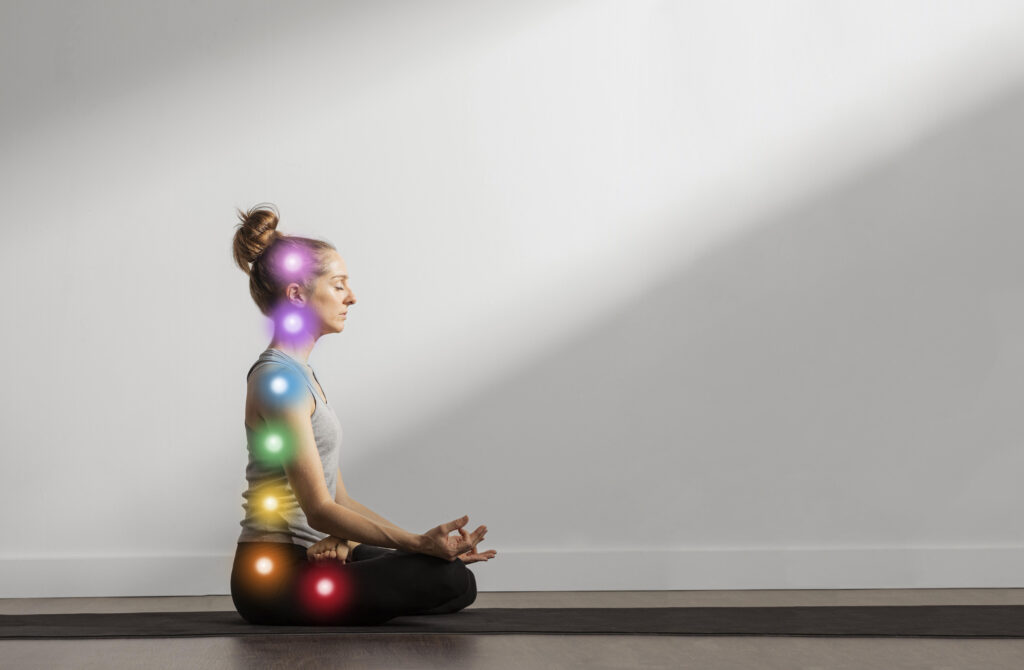While Polyvagal Theory (PVT) and the three gunas – Sattva (balance), Rajas (activity), and Tamas (inertia) – may seem worlds apart, their integration offers a unique approach to understanding human behavior. Yoga and Indian philosophy refer to guna as a particular quality, along with PVT, which has roots in contemporary neuroscience. This international blend allows individuals to understand different physiological states.
Understanding the Basics: PVT and Gunas
To begin, PVT divides the autonomic nervous system into three separate categories: the ventral vagal (social engagement), sympathetic (fight or flight), and dorsal vagal (shutdown). From this, the three gunas serve as primary drivers of individual thought and behavior. Rajas refers to activity, Tamas denotes inertia while Sattva closes the triad as balance.
Drawing Parallels
Sattva and Ventral Vagal State: While Sattva is harmony and clarity, the ventral vagal state facilitates feelings of safety, connection, and emotional regulation. Both promote resilience, optimal functioning, and social bonding.
Rajas and Sympathetic Activation: Rajas represents energy and passion, which can be motivation or restlessness. In PVT language, sympathetic activation is our stress response, energizing action and movement. Chronic activation can result in anxiety or burnout.
Tamas and Dorsal Vagal Shutdown: Tamas represents inertia, dullness, or avoidance, reflecting the dorsal vagal state of withdrawal and collapse. This shutdown response can be due to overwhelming stress or trauma.
The Dynamic Dance Between States
Both systems speak to the fact that we are not stuck in any one state. Our experiences, thoughts, and behaviors fluctuate between states. Stress can lead us toward a rajasic or tamasic state, and practices that induce calm and oneness can bring about a sattvic state. This is where yoga’s wisdom comes into play.
Yoga as a Bridge Between Ancient and Modern Wisdom
| Yoga Approach | PVT Mechanism | Guna Target |
| Slow-paced asana | Enhances vagal brake | Reduces rajas |
| Bhramari pranayama | Stimulates ventral vagus | Increases sattva |
| Yoga Nidra | Regulates dorsal vagal tone | Alleviates tamas46 |
Embracing the Convergence
While PVT remains controversial in neuroscience3, this convergence provides a translational framework – ancient concepts like guna balance gain neurophysiological grounding, while modern stress physiology finds roots in yogic wisdom. Both ultimately aim for self-regulation: PVT through neural platform shifts, yoga through cultivating sattvic dominance56.
In this context, the process of developing Sattva is not only philosophical but also physiological—a balanced integration of body, mind, and spirit.
Citations:
- https://www.yogabasics.com/learn/the-3-gunas-of-nature/
- https://courses.onlineyoga.school/pages/what-are-the-3-gunas-sattva-tamas-and-rajas
- https://en.wikipedia.org/wiki/Polyvagal_theory
- https://kripalu.org/resources/polyvagal-theory-and-gunas-qa-marlysa-sullivan
- https://pmc.ncbi.nlm.nih.gov/articles/PMC5835127/
- https://yogauonline.com/yoga-health-benefits/yoga-for-stress-relief/the-vagus-nerve-in-the-light-of-yoga-philosophy-polyvagal-theory-and-the-3-gunas/
- https://sequencewiz.org/2021/08/04/three-main-forces-that-define-your-mental-state-reactions-and-behavior-the-gunas-and-the-polyvagal-theory/
- https://sequencewiz.org/wp-content/uploads/2019/10/The-Polyvagal-Theory-and-the-three-gunas.pdf
- https://yinyoga.com/yinsights/the-three-gunas/
- https://www.in.yoga/en/2013/03/02/the-gunas-sattva-rajas-and-tamas/
- https://en.wikipedia.org/wiki/Samkhya
- https://pmc.ncbi.nlm.nih.gov/articles/PMC9930472/
- https://www.webmd.com/brain/vagus-nerve-what-to-know
- https://somaticmovementcenter.com/what-is-polyvagal-theory/
- https://my.clevelandclinic.org/health/body/22279-vagus-nerve
- https://www.counselling-directory.org.uk/memberarticles/an-introduction-to-polyvagal-theory
- https://www.sciencedirect.com/topics/neuroscience/vagus-nerve
- https://www.yogajournal.com/lifestyle/health/yoga-philosophy-101-3-gunas/
- https://pubmed.ncbi.nlm.nih.gov/29535617/
- https://www.frontiersin.org/journals/human-neuroscience/articles/10.3389/fnhum.2018.00067/full
- https://en.wikipedia.org/wiki/Tamas_(philosophy)
- https://www.ekhartyoga.com/articles/practice/the-play-of-the-three-gunas
- https://isha.sadhguru.org/en/wisdom/article/the-three-gunas-tamas-rajas-and-sattva
- https://www.arhantayoga.org/blog/sattva-rajas-tamas-gunas/
- https://hridaya-yoga.com/the-three-gunas-sattva-rajas-and-tamas/
- https://yogainternational.com/article/view/the-gunas-natures-three-fundamental-forces/
- https://www.frontiersin.org/journals/integrative-neuroscience/articles/10.3389/fnint.2022.871227/full
- https://pubmed.ncbi.nlm.nih.gov/35941799/
- https://www.frontiersin.org/journals/neuroscience/articles/10.3389/fnins.2018.00458/full
- https://pmc.ncbi.nlm.nih.gov/articles/PMC10724739/
- https://pmc.ncbi.nlm.nih.gov/articles/PMC3108032/
- https://yogauonline.com/yoga-health-benefits/yoga-for-stress-relief/tools-for-trauma-informed-yoga-a-review-of-applied-polyvagal-theory-in-yoga-by-dr-arielle-schwartz/

